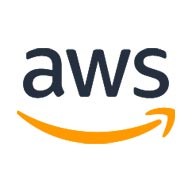Como estava esse conteúdo?
O que as previsões do CTO da Amazon, Werner Vogels, para 2022 significam para as startups
Como CTO da Amazon desde 2005, Werner Vogels observou macrotendências no setor de tecnologia, dando a ele uma perspectiva única para distinguir o progresso substantivo de meros modismos. Recentemente, ele publicou sua opinião sobre o que espera em 2022 para a tecnologia de nuvem e o mundo da tecnologia em geral.
Em seu post, Werner apresenta cinco previsões principais sobre o crescimento da inteligência artificial (IA), a abundância de dados, o poder do machine learning (ML), a arquitetura para a sustentabilidade e o alcance total da conectividade via Internet, apoiada por recursos baseados em nuvem. Acho que sua análise fornece conclusões para as startups em geral e onde elas podem buscar criar valor no próximo ano.
Vamos mergulhar em cada um desses desenvolvimentos previstos e seu impacto potencial no mundo das startups.
1: o desenvolvimento de softwares com suporte por IA assumirá o comando
Nessa previsão, Werner destaca os empolgantes avanços da IA que estão apenas começando a impactar o mundo do desenvolvimento e execução de software em grande escala. Vemos isso em ferramentas da AWS, como o Amazon DevOps Guru, que usa recursos de ML para observabilidade e práticas recomendadas operacionais, e o Amazon CodeGuru, que usa ML para inspecionar o código de um desenvolvedor em busca de problemas. Também vemos isso nas capacidades das ferramentas dos parceiros da AWS, como o GitHub Copilot, que usa ML para ajudar os desenvolvedores a escrever código.
Em breve, um desenvolvedor poderá aproveitar os recursos de ML e IA para ir muito além de sua própria experiência e conhecimento imediatos, ampliando seu impacto e sua capacidade de oferecer novos recursos e capacidades aos seus principais produtos comerciais.
Para startups, o impacto disso pode ser enorme. Imagine acelerar o desenvolvimento de aplicações por meio de ferramentas de geração de código, inspecionar as aplicações por meio de ferramentas que alertam você sobre possíveis bugs e, em seguida, implantar e gerenciar as aplicações com orientação automatizada sobre melhorias de performance ou custo. O tempo de comercialização e os ciclos de iteração diminuiriam drasticamente. Os problemas de produção também poderiam ser corrigidos mais rapidamente. A performance pode ser ajustada antes que os clientes sejam afetados. O resultado seria startups ainda mais enxutas, capazes de alcançar maior velocidade e foco no desenvolvimento, uma chave para o sucesso e o crescimento.
2. A nuvem em todos os lugares tem uma vantagem
Em 2021, quase 60% de toda a população mundial tinha acesso à internet. A conectividade com a Internet está presente em nossas casas, nos negócios que frequentamos e até mesmo em nossos meios de transporte. Cada vez mais, os dispositivos que carregamos, usamos ou temos ao nosso redor a qualquer momento também podem ser conectados à Internet por meio da nuvem. Para Werner, isso significa que a oportunidade apresentada pela escala e pelo tamanho da nuvem para permitir que as empresas criem software e dispositivos que vivam ao nosso lado é maior do que nunca.
A nuvem agora existe não apenas em lugares como regiões geográficas e locais de borda da AWS, mas em todas as coisas conectadas à Internet. Tecnologias como as da família AWS IoT e produtos da AWS que ajudam a tornar o gerenciamento de redes distribuídas de dispositivos mais fácil de operar e escalar oferecem aos desenvolvedores novos superpoderes nesse mundo de “nuvem em todos os lugares”.
Isso cria uma enorme oportunidade para as startups criarem produtos e serviços técnicos avançados que impactam o dia a dia das pessoas em todo o mundo. De pequenas empresas tradicionais e tradicionais, passando por redes globais de infraestrutura e logística, até dispositivos domésticos ou dispositivos vestíveis, o conceito de nuvem na ponta apoiará muitas novas ideias de produtos. Pense em recursos avançados de IA/ML na borda, orientando as decisões de negócios à distância, ou dispositivos acionados por sensores que processam anomalias quase em tempo real, potencialmente reduzindo os dispendiosos tempos de inatividade e mantendo a produção dos bens necessários.
3. O surgimento de espaços inteligentes, especialmente no atendimento a idosos
Em todo o mundo, a idade média dos indivíduos está aumentando. Os avanços nas práticas médicas e nos padrões de vida em todo o mundo no último século aumentaram a expectativa de vida, em comparação com épocas anteriores. Combinado com as mudanças no planejamento familiar em muitos países, isso também significa menos pessoas mais jovens. Essa tendência nos deixa com uma lacuna no cuidado de idosos que apresenta uma oportunidade para novas tecnologias ajudarem não apenas os idosos, mas aqueles que os apoiam e cuidam deles, por meio do surgimento de espaços inteligentes.
Com o crescimento da nuvem em todos os lugares, o potencial da IA e do ML de impactar a vida diária cria oportunidades totalmente novas para startups. Desde o desenvolvimento de wearables inteligentes e dispositivos domésticos que funcionam de forma diferente para os membros mais velhos da família até a implementação de tecnologias que os ajudem a acessar e interagir mais facilmente com o mundo ao seu redor, as empresas podem mudar a forma como envelhecemos com dignidade e independência e como apoiamos os idosos.
4. A sustentabilidade tem sua própria arquitetura
Os desenvolvedores que criam aplicações na nuvem estão familiarizados com os conceitos de ajuste para métricas de performance, como tempo de carregamento da página, latência da API ou custo total da infraestrutura. Existem ferramentas, práticas e orientações para ajudá-los a tomar as melhores decisões em relação a cada uma dessas preocupações. Mas uma área comum foi menos enfatizada no passado: o impacto da workload em relação à sustentabilidade. Como a escalabilidade para lidar com workloads específicas afeta nosso ambiente?
Nessa previsão, Werner descreve como os desenvolvedores considerarão cada vez mais o impacto ambiental de suas aplicações e como ajustá-lo potencialmente, juntamente com a performance e o custo. Com o recém-anunciado pilar do AWS Well Architected Framework sobre sustentabilidade e os dados que serão disponibilizados pela próxima ferramenta de pegada de carbono do cliente da AWS, nossos clientes agora podem entender e arquitetar melhor isso.
Isso significa que as startups agora podem avaliar o impacto ambiental de seus negócios. Para alguns, isso se tornará um ponto de referência, usado para posicionar a empresa em direção a novos clientes e para contratação. Para outros, representará uma métrica de negócios monitorada que impulsiona a inovação e as capacidades do produto. Pode-se imaginar grupos de capital de risco focados em empresas ambientalmente conscientes. Também haverá oportunidades para novos produtos que consumam esses dados de pegada de carbono, bem como aqueles disponibilizados por meio de programas como a Iniciativa de Dados de Sustentabilidade da Amazon, que podem afetar a vida dos consumidores finais.
5. Uma nova onda de conectividade inicia uma nova classe de aplicações
Como escrevi anteriormente, cerca de 60% da população mundial tem acesso à internet. Embora esse número represente o avanço tecnológico que mais cresce na história da humanidade, ele ainda deixa para trás um grande número de pessoas. A rápida expansão prevista de satélites de baixa órbita terrestre, que podem fornecer conectividade de alta velocidade a quase todos os pontos do planeta, ajudará a fechar a lacuna de cobertura, tornando a Internet verdadeiramente global.
Em certo sentido, isso abre ainda mais oportunidades para as previsões abordadas anteriormente. Quando a Internet está literalmente em toda parte e a nuvem se estende por todas as suas bordas — com acesso a ferramentas de IA e ML, recursos de análise e processamento de dados em grande escala e ferramentas para habilitar dispositivos inteligentes em qualquer lugar — surgirão classes totalmente novas de oportunidades de negócios. Para startups, isso significa novos mercados acessíveis e novas maneiras de desafiar as normas existentes e ultrapassar os limites do que existe hoje.
Isso também abre as portas para o crescimento de startups nesses mercados emergentes. Já estamos vendo o aumento do investimento em grandes partes do mundo, por exemplo, o crescimento das coortes do Y Combinator na África e no Sudeste Asiático. Como resultado, os desenvolvedores dessas partes recém-conectadas do planeta poderão impactar o mundo diretamente ao seu redor. É provável que também vejamos impactos culturais e sociais; aumentar a capacidade de se comunicar e compartilhar informações torna a humanidade cada vez mais conectada.
Olhando para o futuro
Essas tendências sugerem oportunidades incríveis para startups no novo ano e nos próximos anos. A maturidade dos ecossistemas em torno de alguns desses avanços tecnológicos está se aproximando de um limite de lugar comum que abre portas para que novas empresas tenham grandes impactos e sucesso, de forma rápida e com investimento mínimo. Para algumas empresas, as tendências de curto prazo gerarão ideias de negócios transformadoras que podem impactar as comunidades globais. Os desenvolvedores têm mais poder na ponta dos dedos para criar produtos rapidamente e em uma escala sem precedentes. Aproveitando os recursos de IA e ML, processando dados em grande escala, expandindo o alcance do seu produto até os limites da Internet e criando interfaces verdadeiramente amigáveis ao ser humano, você pode mudar o mundo.
Como sempre na AWS, estamos animados para estar aqui com você neste momento empolgante e estamos ansiosos para ajudá-lo a criar.

AWS Editorial Team
A equipe de Marketing de Conteúdo da AWS Startups colabora com startups de todos os tamanhos e setores para oferecer excepcional conteúdo educativo, divertido e inspirador.

Chris Munns
Chris Munns é Líder Técnico e Consultor da organização Startup Solution Architecture da Amazon Web Services. Chris trabalha com os colegas da AWS em como apoiar melhor as startups clientes da AWS e envolve-se diretamente em ajudar startups inovadoras a superar desafios técnicos complexos. Na AWS há mais de dez anos, Chris já liderou a defesa de desenvolvedores para tecnologias sem servidor da AWS, foi gerente global de desenvolvimento de negócios para tecnologias de DevOps e foi arquiteto de soluções nos primeiros dias da área na AWS. Antes da AWS, Chris ocupou cargos seniores de engenharia de operações na Etsy, Meetup e outras startups sediadas na cidade de Nova York. Chris é bacharel em redes aplicadas e administração de sistemas pelo Rochester Institute of Technology.
Como estava esse conteúdo?